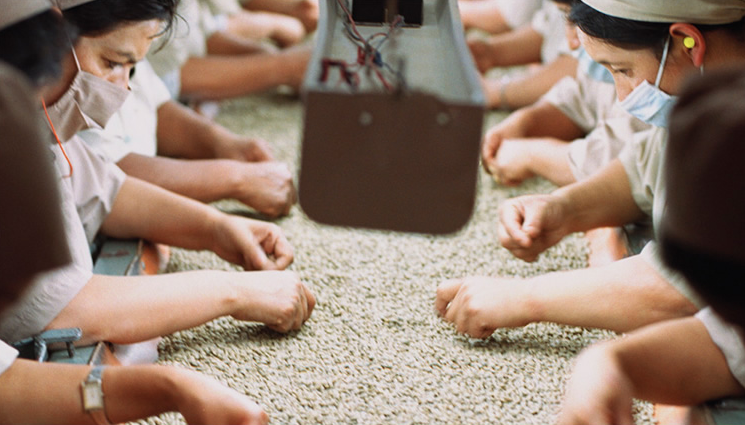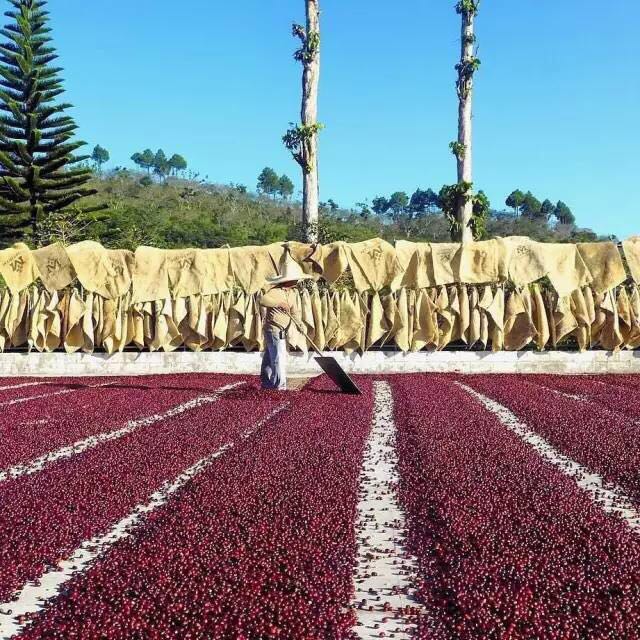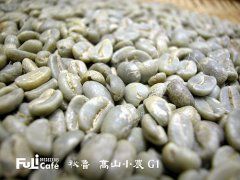Indian monsoon Mosooned coffee treatment and Sumatra aging Aged coffee treatment introduction
For professional baristas, please follow the coffee workshop (Wechat official account cafe_style)
Introduction to aged Coffee and Monsoon Coffee
Two types of exotic coffee-Indian monsoon (Mosooned) treated coffee and Sumatran aging (Aged) treated coffee.
During the long sea voyages of the 18th and early 19th centuries, human coffee was placed in moist sailboat cabins, and coffee beans had a special flavor because of the sea breeze and the moist air at sea for a long time. Modern monsoon and aging treatments are a representation of this historically low-acid coffee with a slightly moldy taste.
Monsoon coffee in India is first treated by the sun, while aged coffee in Indonesia (Sumatra) is also treated in advance by local traditional treatment.
In open-air warehouses on the southwest coast of India, monsoon-treated coffee is exposed to wet monsoons for three to four months, while Indonesian aged coffee is stored in closed warehouses (usually in Singapore) for two years or more.
Different treatments make the final appearance of coffee beans very different-monsoon-treated coffee looks soft, smooth and pale with yellow, aging-treated coffee is small, shrunken and dark in color. But the effects of the two treatments on coffee flavor are often similar: mainly reduce acidity, have moderate alcohol thickness and add mildew flavor, and different people have different descriptions of this flavor: spicy, cedar wood resin, smoking, chocolate, and so on, sometimes it is only described as moldy smell in wet wardrobe.
These treated coffees are serious coffee (although it is unorthodox compared to single-origin coffee), but it is very useful because it can add complexity to deep-roasted blended coffee and espresso.
These special types of coffee are challenging for coffee critics. Wine is the best analogy / reference when commenting on pure and sweet-and-sour washed coffee in Latin America and East Africa. In contrast, when commenting on the flavor characteristics of aged and monsoon-treated coffee, we need to look for new analogies / references: these references are characterized not by purity but by irritation and even rotting sensations: such as moist leaves, dirt, leather, herbs, root vegetables, flowers that bloom only at night, and sweet spicy feelings such as gingerbread. In drinks, the imperfect but perhaps the most appropriate analogy / reference may be single malt whisky and tequila.
People who are accustomed to commenting on various grades of washed coffee in Latin America with wine analogies may not be used to this particular analogy between aged coffee and monsoon coffee. No matter how strange it may be in the eyes of Central American coffee cup testers, this analogy and cup evaluation criteria are conscious and consistent. In essence, when evaluating these specially processed coffees, we should accept and look for their special sensory demands: low acidity, high intensity and complexity, as well as the slight mildew and fermented flavor brought about by unorthodox practices.
However, the features we are looking for should not represent rough or rotting smells in the fertilizer pile. We believe that there is a clean earthy smell in the world-for example, the smell of fresh fallen leaves is just beginning to turn to humus-which is very different from the pungent taste mold (often described as earthy / earthy) emitted under a pile of discarded wet rags.

What kind of moldy smell?
According to these standards, there is a great difference in quality between aged coffee and monsoon treated coffee in this cup test. At least two coffees are almost undrinkable, one Indian monsoon treated coffee and one aged Sumatran coffee. The monsoon-treated coffee is lifeless and lifeless, like rubber, and the aged Sumatran coffee has a sickening mildew and rotting fermented flavor.
On the other hand, the high-scoring Martinez monsoon-treated coffee (91 points) showed a soft, slightly moldy flavor (softly musty), reminiscent of smoked chocolate and orange flavor. Among the aged coffees, the highest score was Roasterie 6 Monkeys's Sumatran coffee (92 points), which showed sweet and spicy flavors of oranges and grapefruit, which often occurs when the best Sumatran coffee is roasted at a deeper degree. The moldy soil flavor is used as the background to support the rich citrus flavor.
Many other samples of aged and monsoon-treated coffee hover between positive mildew and negative intense mildew.
What is the reason for the obvious difference between aged coffee and monsoon treated coffee samples?
Obviously, some problems / mistakes in the monsoon or aging process can aggravate the mildew and imbalance of the coffee. For example, monsoon-treated coffee needs to be regularly taken out of coffee linen bags, tiled, ripped and repackaged. In the aging process, the coffee does not need to be taken out of the bag, but the bag needs to be moved periodically and re-accumulated to keep the coffee humidity uniform throughout the process.
However, a more important factor determining the quality of the final product may be the quality of the coffee beans themselves before the start of the process. Recall that monsoon-treated coffee is sun-treated coffee. Most Indian sun-treated coffee is coffee berries discarded by washing stations, while the best monsoon-treated coffee is produced by all-red fruits carefully selected by local Indians. These sun-treated coffee are of very high quality before they enter the warehouse and start monsoon treatment, which is only used to complicate and deepen the original properties of the coffee.

Important Notice :
前街咖啡 FrontStreet Coffee has moved to new addredd:
FrontStreet Coffee Address: 315,Donghua East Road,GuangZhou
Tel:020 38364473
- Prev

Description of flavor and aroma of organic washed G1 coffee from alpine farmers in northern Peru
Professional barista exchange please follow the coffee workshop (Wechat official account cafe_style) 159 Peru [Peruvian alpine farmers organic washing G1] * product description is located in western South America, the Andes stretches from north to south. This organic washed Peruvian coffee bean comes from the town of Chichamayu in the Junin producing area, which is the most famous and best quality area of several coffee producing areas in Peru. Most of
- Next

PB coffee tastes delicious with washed pearls and round beans at Butterfly Dance Manor in the Waji Valley of western New Guinea.
Professional baristas please follow the Coffee Workshop (Wechat cafe_style) 618New Guinea Butterfly Dance Manor is located in the western highlands of PNG, planting about 1800 meters above sea level, trees from the Blue Mountains of Jamaica. This coffee is grown by small farmers and then purchased by bean merchants for further refined coffee. The beans are full, round and slightly longer, and the color is green. Characteristic grass and walnut
Related
- Detailed explanation of Jadeite planting Land in Panamanian Jadeite Manor introduction to the grading system of Jadeite competitive bidding, Red bid, Green bid and Rose Summer
- Story of Coffee planting in Brenka region of Costa Rica Stonehenge Manor anaerobic heavy honey treatment of flavor mouth
- What's on the barrel of Blue Mountain Coffee beans?
- Can American coffee also pull flowers? How to use hot American style to pull out a good-looking pattern?
- Can you make a cold extract with coffee beans? What is the right proportion for cold-extracted coffee formula?
- Indonesian PWN Gold Mandrine Coffee Origin Features Flavor How to Chong? Mandolin coffee is American.
- A brief introduction to the flavor characteristics of Brazilian yellow bourbon coffee beans
- What is the effect of different water quality on the flavor of cold-extracted coffee? What kind of water is best for brewing coffee?
- Why do you think of Rose Summer whenever you mention Panamanian coffee?
- Introduction to the characteristics of authentic blue mountain coffee bean producing areas? What is the CIB Coffee Authority in Jamaica?

